|
|
F
|
|
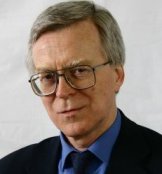 |
Died on the 17th June 2008 at the age of 65 (Green Party)
Brian Fewster was a stalwart of the Green Party for almost thirty years. He joined the party in 1979 continuing to be active from then up to a week before his death despite suffering from cancer. He was active in the Green Party locally, regionally and nationally. Locally he stood in many local elections and in the 1983 General Elections in the Harborough constituency. He also held various positions in the Leicester Green party including Press Officer, Website Manager and Newsletter Editor.
At a regional level he was the lead candidate in the last European Elections where the party obtained over 5% of the vote. At a national level he was on the Regional Council for several years and attended most conferences. Brian had a very real concern for people in general but particularly for those in the third world. This lead him to work in Calcutta as a volunteer through Voluntary Services Overseas. He was also involved in many other organisations fighting for social justice including the World Development Movement, CND and the Leicester Civil Rights Movement. Through these organisation's campaigns he wrote many letters to people in power and attended many demonstrations, whether in Leicester or London.
But perhaps his greatest love was language whether writing poetry, reading a novel or correcting text. On many occasions I was on the receiving end of his red pen. In fact I can feel him hovering over me as I write his obituary. As National Elections Co-ordinator I had responsibility for the production of two national manifestos which Brian kindly agreed to proof read, a task for which he deserves a medal. Brain was a kind, sensitive and caring person and he will be sorely missed by many people in Leicester and further a field.
Source: Geoff Forse 2008
|
|
Born: Holborn, London, c1854 (I.L.P)
Arthur Field arrived in Leicester in early 1890s he was an executive member of the Dockers' Union of London. In 1892, he was active in support of the abortive Social Democratic Federation candidates in Latimer and Spinney Hill ward. The stood under the guise of 'National Independent Labour' candidates. He delivered a scathing attack on the Trades Council members who had been elected to the Council. In his view they were not real labour men.
As soon, as they got within the shadow of the gilded chamber they appeared to forget all their old associations, and one had even gone so far as to be made an alderman... they had forgotten the cause of labour and gone seeking after the fleshpots of Egypt, these were worse than employers or capitalists. The Liberal party was a greater sham than the Conservative, and consisted of nothing more than a party of soap chandlers and sweating bootmakers.
Field was a member of the I.L.P.’s First National Administrative Council and a supporter of the socialist H.A. Champion. He attended the inaugural conference of the I.L.P. in Bradford in 1893 where he sat as a delegate representing Leicester even though no branch existed. He was on good terms with Joseph Burgess, despite the fact the antipathy between Burgess and Champion. He spoke at Leicester’s first May Day rally in 1893 where he urged all concerned to join the I.L.P. He was an itinerant photographer and by ?1901 he was retired and living in Islington.
Sources: Leicester Chronicle, 15th October 1892
|
|
Born: Leicestershire, circa 1824 (Secularist and Comteian)
George Findlay was a framework knitter and a Chartist. After he became unemployed, he set himself up as a second hand book seller. The business had barely started when in March 1852. a fire in neighbouring warehouse totally destroyed his premises and his stock. He was uninsured and was made homeless. An appeal was made by Thomas Emery and Joseph Dare to assist him. It must have been successful since he kept a second-hand bookshop at 83 High Street for man years.
Findlay became the leader of the Leicester Comteians. They were those who wished to transform secularism into a religion. He corresponded with Congreve, Crompton and Carson who were also occasional visitors to his home.
Sources: Leicestershire Mercury, 20th March 1852, David Nash, Secularism, Art and Freedom
|
|
Born c1811 - 1859 (Chartist leader)
Finn was a framework knitter and a leading member of the Working Men’s Association of the 1830s. He was self taught and acted as a lay pastor to a working-class congregation of General Baptists and was an able speaker. For many years he worked six days at the frame and then travelled 20 miles on Sunday to preach. In 1838 he expressed the view that:
"In a long course of years, there had been a downward tendency in the wages of framework-knitters, and they now earned scarcely sufficient to keep them in existence. Some persons seemed inclined to attribute the distresses of the poor, in a great degree, to drunkenness and early and improvident marriages. and most certainly these were productive of great miseries in society; but the people were not as a body drunken and improvident, and the chief causes of their depressed condition must be sought elsewhere. He believed that the only effective relief were measures to increase and protect the value of the wages of labour." (Cheers.)
He was prominent, along with John Markham, in 1838 with a proposal for co-operation between workers and employers to regulate conditions in factories in a joint union. It looked back to an era of craft guilds, but was unacceptable to the employers in an age of naked capitalism.
He assisted in the formation of the Chartist organisation in Leicester in 1838 and was elected to the committee. He favoured co-operation with the middle class radicals and became chairman of the Working Men’s Anti-Corn Law Association which gave its support of the People's Charter. However, he was more active against the Corn Laws than as a Chartist. In 1848, he was lecturing on the "baneful influences of a State Church Establishment," to the Progressive Reform Association.
Sources: Leicestershire Mercury, 9th June, 6th October 1838, 3rd June 1848, Leicester Chronicle 31st March 1838, 6th June 1840, South Midlands Free Press, 15th January 1859, A. Temple Patterson, Radical Leicester
|
|
Owenite Social Missionary
On July 29, 1839 in Leicester, George Fleming, an Owenite propagandist, opened a Social Institute in Hotel Street. The hall could hold two hundred people and was above a grocer's shop. Here Fleming taught not only Owen's principle that the formation of character depended on nature at birth and the action of circumstances, but asserted that in the “New Moral World” it would be in the interest and happiness of everyone to act upon the precepts of Christianity. But he took care to add that he meant the religion taught by Christ and not the Christianity professed in modern times. A report of the hall's opening ceremony appears in the Owenite journal, New Moral World, signed by W. P. Throsby. The following evening Fleming gave a two-hour lecture on the Owenite system and “the audience, among whom were many respectable females, teachers of infant and private schools, could not be restrained from manifesting, by enthusiastic cheering, their appreciation of the new system”. The charge of the Leicester district was then undertaken by the Social Missionary, James Rigby, who: joined deistic doctrine with his socialistic teaching, and who was violently attacked in an address at the Leicester Theatre (April 1840) by the notorious man Brindley. When the Social Institute closed and the Mechanics Institute was found to be too restricted intellectually, the inquiring minds found a home in the Discussion Class conducted by Mr. Dare in the Leicester Domestic Mission Hall in All Saints Open.
Sources: David Nash, Secularism, Art and Freedom
|
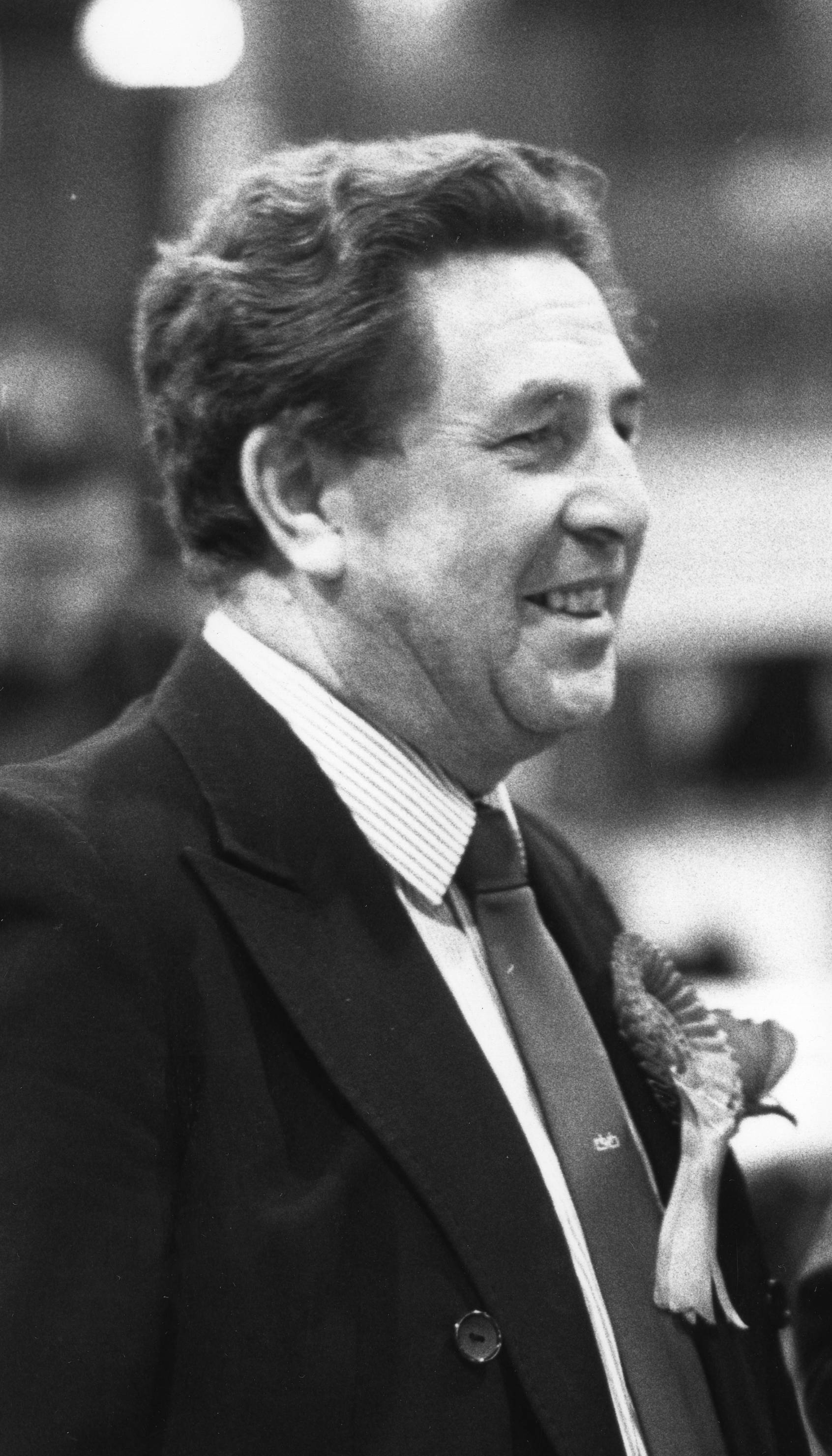
Ray Flint 1987
|
Born: Leicester February 1929 died: 12th April 2019 (Labour Party)
Ray Flint was the son of a bread salesmen and a woodworking machinist, who worked in the building trade. During his political career he was both a City and County Councillor during the time when Leicester had been reduced to a district council. He represented Abbey and then Momacre Ward. In the 1980s, when the City Council Labour group was at its most radical, he was seen as one the stalwarts of Leicester West who were traditional in their outlook. Ray was nevertheless well respected as chair of the City Council's Recreation Committee. He was also a magistrate and was Lord Mayor during 1997-1998 after which he retired from the Council. He was always very direct, often to the point of being blunt.
Sources:
|
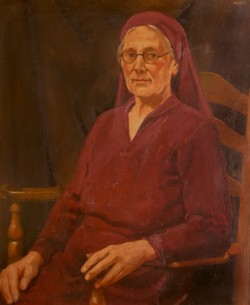 |
Born: Chelsea 1866, died: 10th September 1946 (I.L.P.& Labour Party)
Emily Fortey was the first woman elected as a Labour Councillor in Leicester. Her father occupied a position as H.M. Inspector of Schools in Madras, India. She studied for a B.Sc at University College, Bristol and obtained an Honours Degree in 1895. Later, while living in a workman’s flat in St. Pancras she qualified in sanitary inspection, midwifery and also studied Sociology at the School of Economics.
At the age of 18 she had joined the Catholic Church and thereafter affected a semi religious outfit. She came to Leicester in 1909 and was elected to the Board of Guardians in 1911. During World War One she was in charge of a small rescue home for girls in Le Havre under the auspices of the Y.M.C.A. She was elected unopposed for St Margaret’s’ ward in 1923 and served for 23 years. Her motion to the Council in 1929, that no married woman should be debarred from permanent employment with the City Council because she was married was lost. (it was not supported by Mrs Swainston, Leicester's first woman councillor)
She was a stern critic of the inadequacies of the Council’s slum clearance policies during the 1930s. Although there was some justification for this, it was no doubt fuelled by her antipathy towards Dr Charles Killick Millard, the Chief Medical Officer of Health who was an advocate of birth control and voluntary euthanasia. In the early 1930s she was reprimanded by the Labour Group for opposing the Council's promotion of birth control. She was Vice-president of the Leicester Temperance Society. A portrait of her hangs in the City Rooms and she is commemorated by the Emily Fortey School.
Sources: Leicester Evening Mail, 5th January 1932, Howes, C. (ed), Leicester: Its Civic, Industrial, Institutional and Social Life, Leicester 1927, Leicester City Council Minutes 1929.
|
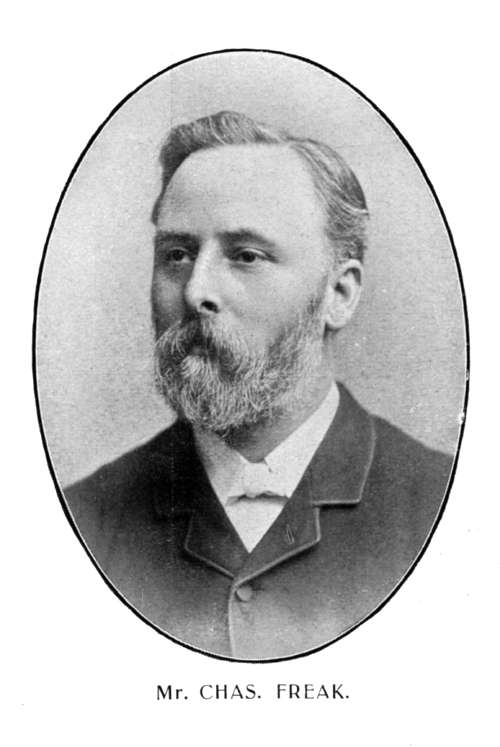 |
Born: Portsmouth, September 1847, died: 1910 (I.L.P.& Labour Party)
'Charlie’ Freake worked as a laster before trying his luck for several years in America. He returned to Britain in the early 1870s and went back into the boot and shoe industry in London, where he was soon caught up in union activity.. He was in office in the London metro branch of NUBSO from 1875 onwards, becoming full-time secretary in 1879 and subsequently full-time president. He was a member of the International Arbitration League and was a member of the London County Council for nine years.
In the 1894, he allied himself with socialists, like T.F. Richards, against Inskip. He became General president of the NUBSO in 1899 and moved to Leicester. He was subsequently elected to Leicester Town Council in 1904 for St Margaret’s ward.
Freake was a man of tough fibre, resilient and sanguine. In appearance he was typical of the ‘respectable’ Victorian trade union leader, with his beard, stained with snuff and beer, and the long frock coat which he was still wearing in the first decade of the 20th century.
“A man of dignified presence and considerable personal magnetism…with a certain brusqueness of manner…not cultured or polished rhetorician, but his rugged eloquence often made greater impression than any refined oratory could have done.”
He was buried in Welford Road cemetery.
Sources: Leicester Daily Post, 1910, Hazel George
|
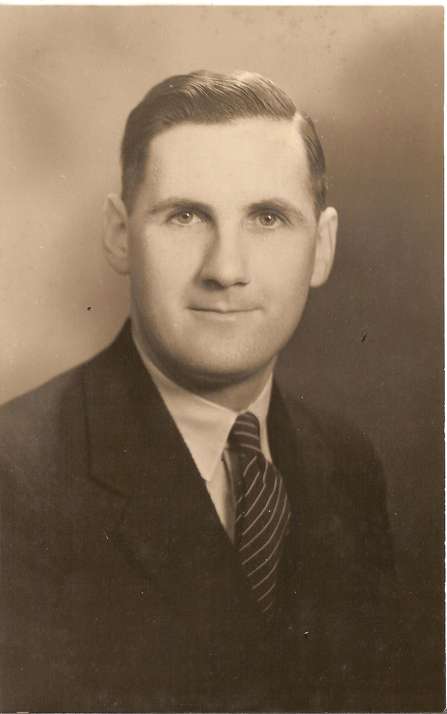
George Freeland c1945
|
Born: 3 September 1911 in Kibworth Beauchamp, died on 15 April 2000 in Oadby, at the age of 88. (Communist Party)
Theodore George Crane Freeland went to Kibworth Beauchamp Grammar school and gained a BA (Hons) in English at London University in 1932. That year he became a probationary teacher teaching in Leicester. From 1940-1945 he served with the Royal Artillery and on his demobilisation he returned to teaching in Leicester.
By the mid 1950s he had become the headmaster of Taylor Street school which at that time served the slums of the Wharf Street area. When he abolished streaming at Taylor Street School, it was one of the first junior school in the country to do so. He chronicled his experience in 1957 in a chapter entitled "Purpose and method in the unstreamed junior school" in New Trends in English Education. In 1958 he wrote:
Current educational changes, like those of thirty years ago, have been mainly at the secondary level. Unhappily, since the war, their chief effect on the junior school has been to imprison its curriculum within the limits of 11 + requirements. Teachers have done their best to educate the children under their care despite this pressure. But, all too often, thorough teaching of the basic skills has been obscured in favour of helping children to a knowledge of how correctly to answer certain types of examination question.
Later he wrote:
My previous experience as a teacher had already convinced me that streaming was a form of organisation which disrupted the school community, children, teachers and parents alike-and one only to be tolerated if an overwhelming case could be made out for it on educational grounds. I could not find one. On the contrary, I saw education as a social process and could not square the all-round development of all the children with the narrow rigidity imposed by streaming. Having taught a number of lower-stream classes I had become convinced that by basing our approach on the idea of an intelligence which was innate, fixed and open to accurate measurement at an early stage, we were in fact imposing an artificial ceiling on the potentiality of a significant proportion of the children.
In 1958, with slum clearance well underway in Wharf Street, he became headmaster of the new Mowmacre Hill junior school. He was elected president of the City of Leicester Teachers' Association (N.U.T.) in 1957 and in 1959 he became a member of the editorial board of the new education journal Forum with Brian Simon. In the 1960s, he became headmaster of Alderman Richard Hallam Junior School from where he retired in the 1970s.
Sources: Leicester Evening Mail 4th March 1957, John Freeland, Ancestry,com, The Junior School Today, Forum Spring Issue, 1959, Non-Streaming in the Primary School-the next steps Summer 1970.
|
|
Born: Blaby 1876 died: March 1953 (I.L.P.& Labour Party)
William Freestone was the eldest of a family of 12, the son of a builder’s labourer and, from 1886, lived in Aylestone Park. Initially he worked in the boot & shoe trade, but after being laid off, at the age of 20, he worked for 12 years as a builder’s labourer. He served on the Executive of the Builders’ Labourers’ Union. He was elected to the Board of Guardians in 1925 and to the City Council from 1927. He served for 25? years and was Secretary of the Aylestone Park Adult School for 22 years
Sources: 1933 election address
|
|
Born: March 1877, died February 1946 (W.S.P.U., Conservative)
Elizabeth Frisby came from a prosperous background. Her father was a boot and shoe factor or agent and the founder of Joseph Frisby, Ltd, Multiple Footwear Stores. She later became a director of her father's firm. The family lived in Knighton Park Road and employed a cook and a maid.
Elizabeth became a very radical and militant member of the local WSPU. She joined circa 1910 and volunteered for ‘danger duty.’ She was arrested in London, along with other Leicester activists in 1910 and in 1911 served 5 days in prison for assaulting a prison officer. In 1913, she was a volunteer at the WSPU headquarters in London and a year later was a participant in the most audacious local act by militant suffragettes. Along with Kitty Marion and Ellen Sheriff, she burnt down Blaby Railway station in July 1914, causing £500 worth of damage. (see Ellen Sherriff for more details). She may well have been a participant in the early failed attempts to burn down Stoughton Hall and Neville Holt Hall. There was also an attack on Evington Golf course, where a bonfire was set ablaze on the green and message "No Votes, No Golf" was etched into the turf. Her father was chairman of the club. Telephone lines in the Stoughton road area were also cut.
On the outbreak of war, Mrs Pankhurst suspended all militant activity and pledged the support of the WSPU to recruiting and the war effort. This zeal was shared by Miss Frisby who swiftly returned from holiday in Antwerp to organise and open a Clothing Depot for the families of reservists. In January, 1916, her family gave a Y.M.C.A. hut to the training camp at Seaford, Sussex, and, together with her sister, took charge of it. She continued with her voluntary work throughout the war and in 1918 received an MBE for her contribution. She joined the Knighton Women’s Conservative Association in 1921, becoming a local Conservative councillor and JP in 1927. She became the first woman Lord Mayor in 1941 with her sister as Lady Mayoress. She never owned up to her involvement in the burning of Blaby railway station.
Sources: Richard Whitmore, Alice Hawkins and the Suffragette Movement in Edwardian Leicester, Shirley Aucott, Women of Courage, Vision and Talent, Census returns, Leicester City Council, Roll of Lord Mayors 1928-2000
|
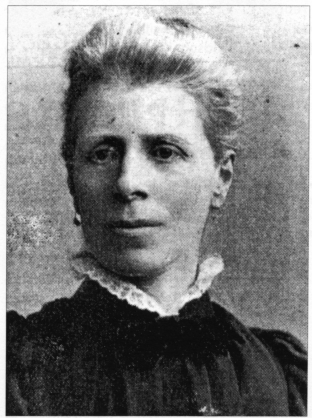 |
Born Leicester, 1846, died: 1918 (Leicester Women’s Liberal Association)
Fanny Fullagar was a daughter of a Belvoir Street doctor. Despite being engaged for seven years to the son of a local vicar, she never married. In the 1880s, she became active in the emerging middle class women’s groups and in 1888 was elected to the Board of Guardians as the Charity Organisation Candidate. The Charity Organisation Society supported the concept of self-help and limited government intervention to deal with the effects of poverty and sought to severely restrict outdoor relief distributed by the Poor Law Guardians.
She was thus the first woman in Leicester to be elected to public office. Although for three years she was the “only woman in a room of men,” she was later joined by other Liberal women including Dr Mary Royce, Charlotte Ellis and Dorothy Coy. At the end of her first term of office she was presented with an illuminated address by the Mayor in recognition of her services.
From 1890 she ran the 'Brabazon scheme' in the workhouse. This had been initiated in 1882 by Lady Brabazon, later the Countess of Meath, to provide occupation for the non-able-bodied inmates of workhouses in crafts such as knitting, embroidery and lace making. There was an annual sale of work and the proceeds were ploughed back to buy more materials rather than to benefit the inmates.
In the 1890s, she became a member of the National Union of Women Workers and campaigned for the registration and training of midwives and for the establishment of Bond Street Maternity Hospital. She remained on the Guardians until 1904, when she was defeated by one vote. Although, Fanny Fullagar and her colleagues from the middle class Women's Liberal Association were pioneers for the representation of women in Leicester, they did little to challenge the social injustices at the heart of the poor law. They were often seen as too discriminatory in only offering charity to the 'deserving' poor. Although she was originally a member of the Church of England, she later became a Unitarian.
Sources: The Wyvern, 30th June 1893, Leicester Chronicle, 10th December 1898, Isabel Ellis, Records Of Nineteenth Century Leicester, Shirley Aucott, Mothercraft and Maternity,1997
|
|
|
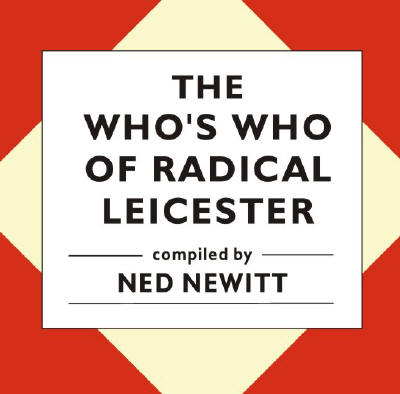 |
Back to Top |
|
© Ned Newitt Last revised: September 14, 2024.
|
|
|
Bl-Bz
Leicester's
Radical History
These are pages of articles on different topics.
Contact
|
